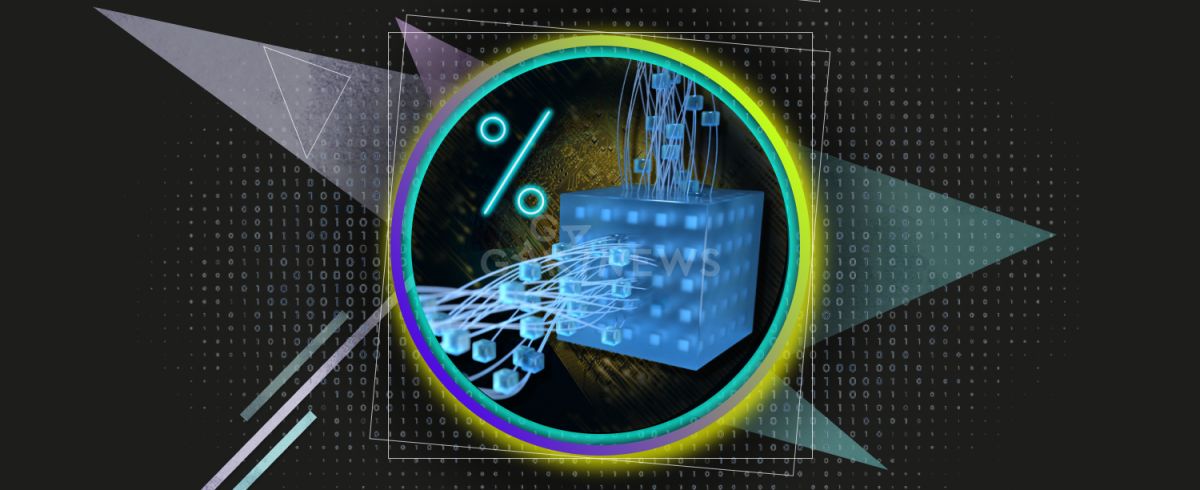Blockchain statistics that illustrate the value of the technology

Blockchain represents one of the most revolutionary technologies today, along with artificial intelligence and machine learning. Blockchain statistics can give an insight into its global reach and impact on various areas of life.
On this page
With its unique characteristics of decentralization, immutability, and consensus, blockchain has conquered the world. A distributed ledger technology is already deployed in the following sectors: finance, energy, retail, supply chains, medicine, and agriculture. Blockchain gave rise to Web 3.0 and metaverse concepts.
Let's take a look at the most significant blockchain statistics that everyone interested in the technology should trace.
The future of blockchain technology
According to Markets and Markets, the global blockchain market will be worth $67.4 billion by 2026 (growing from $4.9 billion as of 2021). The market research firm estimates that the industry will experience a compound annual growth rate of 68,4% over five years.
Markets and Markets analysts believe that the main driving factors fueling blockchain's rapid growth are increased venture capital funding and widespread use of the technology in banking and security sectors.
Blockchain and the Internet of Things (IoT)
Mordor Intelligence predicts that the blockchain IoT market will grow by 40% from 2021 to 2026.
IoT is a progressive industry that is designed to improve and automate human life. The Internet of Things represents internet-connected physical objects that can exchange data and simplify human interaction. This concept includes smart objects (watches, vacuum cleaners, refrigerators, sensors, etc.), security systems, and virtual assistants. Blockchain technology will greatly facilitate the secure exchange of data between connected IoT devices.
Blockchain in the IT sector
According to MVP, 60% of CIOs intend to integrate blockchain into their infrastructure in 2022. The data significantly differs from the results reported in 2016, 2017, and 2018. In those days, more than 50% of CIOs surveyed had no interest in blockchain technology.
Blockchain in agriculture
According to BIS Research, blockchain in agriculture will reach a value of $1.48 billion by 2026. The market research company says the technology will completely revolutionize the agriculture industry with its accuracy and improved data security. They believe that blockchain will take inventory and food production security to a new level.
Blockchain in financial services
As of 2020, more than 30% of the total blockchain market value comes from the financial market as reported by Statista. According to the research data, the manufacturing sector accounted for 17.6%, the service sector for 14.6%, and the public sector for 4.2%.
Increased spending on blockchain solutions
Another blockchain statistic published by Statista Research Department showed that global spending on blockchain increased from $4.5 billion to $6.6 billion in 2021. Analysts expect this figure to grow to nearly $19 billion by 2024, as more companies will use the technology to verify and secure data.
Global GDP boost through blockchain
According to PwC, blockchain stands to boost global GDP by $1.76 trillion by 2030. Today blockchain contributes 1.4% to the global GDP, according to the company's research.
In addition, the survey found that 61% of companies see digital transformation as a priority, with blockchain as a means to address the growing need for security and transparency.
The blockchain statistics cited in this article reveal the potential of the technology and its booming adoption in a variety of industries. At present, we can state with certainty that investments in blockchain will continue to grow, and the technology will keep advancing.
The content on The Coinomist is for informational purposes only and should not be interpreted as financial advice. While we strive to provide accurate and up-to-date information, we do not guarantee the accuracy, completeness, or reliability of any content. Neither we accept liability for any errors or omissions in the information provided or for any financial losses incurred as a result of relying on this information. Actions based on this content are at your own risk. Always do your own research and consult a professional. See our Terms, Privacy Policy, and Disclaimers for more details.



























